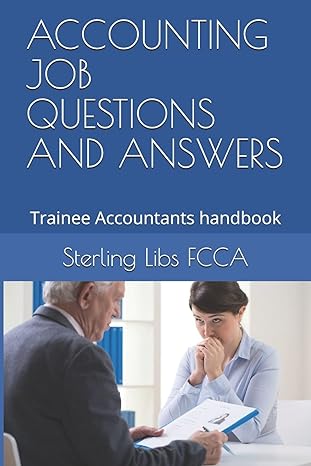Question
HURRICANE KATRINA In August of 2005 one of the strongest hurricanes on record struck the gulf coast of the south east United States. Hurricane Katrina
HURRICANE KATRINA
In August of 2005 one of the strongest hurricanes on record struck the gulf coast of the south east United States. Hurricane Katrina caused more than 1800 deaths and caused over 80 billion dollars in property damage. All of the areas hit by the storm lost all electrical power as well as many locations nearby that were not hit by the storm.
DEMAND GOES WILD
After the storm the entire Southeastern United States was in a panic. The news showed many pictures of the devastation along coastlines and the wrecked homes and businesses. Most reports focused on the damage in New Orleans and showed how the dramatic failure of the levy system led to widespread misery. Almost immediately, after the storm, demand for GEI generators exploded.
First there was great demand for generators in the storm areas. However, after a few days of incredible television coverage orders began to come in from areas in the Gulf and Atlantic regions in the Southeastern United States in record numbers. It seemed that word of the product had been well received and that Katrina had served as a lightning rod for consumers. Paradoxically, the storm that had caused so much misery and destruction for individuals and businesses, was a tremendous opportunity for GEI. The question was if the company could move quickly enough and in the right direction tactically and strategically to capitalize on the opportunity.
THE MEETING
Doug Smith, CEO of Gulf Electric immediately called a senior staff meeting. Doug was looking for solutions and he needed some quick answers. Obviously GEI had to come up with some additional capacity to meet what seemed to be rapid and permanent demand. This was a problem GEI had before Katrina due to the success of the PowrFlo and SunyFlo products. However, Katrina had given the entire product line a new measure of urgency. The senior staff meeting that the CEO called included the Vice president of Marketing Marcia Gonzalez, the Vice president of Human Resources Amy Johnson, the CFO Alan Wills and the COO Frank Criss with his Chief Engineer John Amer.
| CEO Doug Smith |
| Chief Engineer John Amer |
| COO Frank Criss |
| VP Human Resources Amy Johnson |
| VP Marketing Marcia Gonzalez
Doug summarized the issue at hand regarding product capacity. Marcia had been proclaiming that the demand for the various product lines was a permanent trend. In past meetings Alan had resisted many of Marcias ideas in favor of large capital budgeting efforts arguing for outsourcing instead. Amy Johnson, who was familiar with costs of recruiting, training and maintaining a work force supported Alan. Amy feared that changes in demand might cause GEI to have too many employees that it could not easily shed in the event of downward demand shifts. This point seemed moot under the current circumstances. It was clear that Katrina was a paradigm shift from business as usual. Alan and Amy conceded the need for additional capacity and new thinking on the subject. Now that all parties seemed ready to discuss the capacity issue Doug asked what process to follow. Alan was still worried about funding and the risk of a large expansion and asked Doug to move cautiously. Doug decided to engage in a Break-even sensitivity analysis before proceeding with any large capital budgeting projections. This seemed to ease the tension for Alan and Amy and so Doug asked Marcia to project demand for one product. The best selling generator (the PowrFlo 500) was chosen to use as a model for the sensitivity analysis. Frank and John would come up with cost estimates for production under several scenarios. Amy would investigate the implications of staffing and Alan would compile the information and present it at the staff meeting next week.
THE SENSITIVITY ANALYSIS
Doug Smith reported to the main GEI conference room for the next weeks meeting. He was happy to see everyone already there. Alan provided Doug with a list of options that had been discussed during the week. There were three options discussed and they are shown in Figure 1.
Figure 1. Analysis of manufacturing options Although the cost of the new facility was staggering and both Alan and Doug were concerned about it they realized that with enough demand for the product the new factory would be the way to go. Doug looked at the breakeven charts that Allan had provided and he could clearly see the sales numbers that were needed to justify the new facility. The only question now was if such demand could materialize to justify the expense. | |||||||||||||||
| CFO Alan Wills |
- As a Group: How might the service plan to maintain generators be used by GEI to provide a future revenue stream?
Step by Step Solution
There are 3 Steps involved in it
Step: 1

Get Instant Access to Expert-Tailored Solutions
See step-by-step solutions with expert insights and AI powered tools for academic success
Step: 2

Step: 3

Ace Your Homework with AI
Get the answers you need in no time with our AI-driven, step-by-step assistance
Get Started


